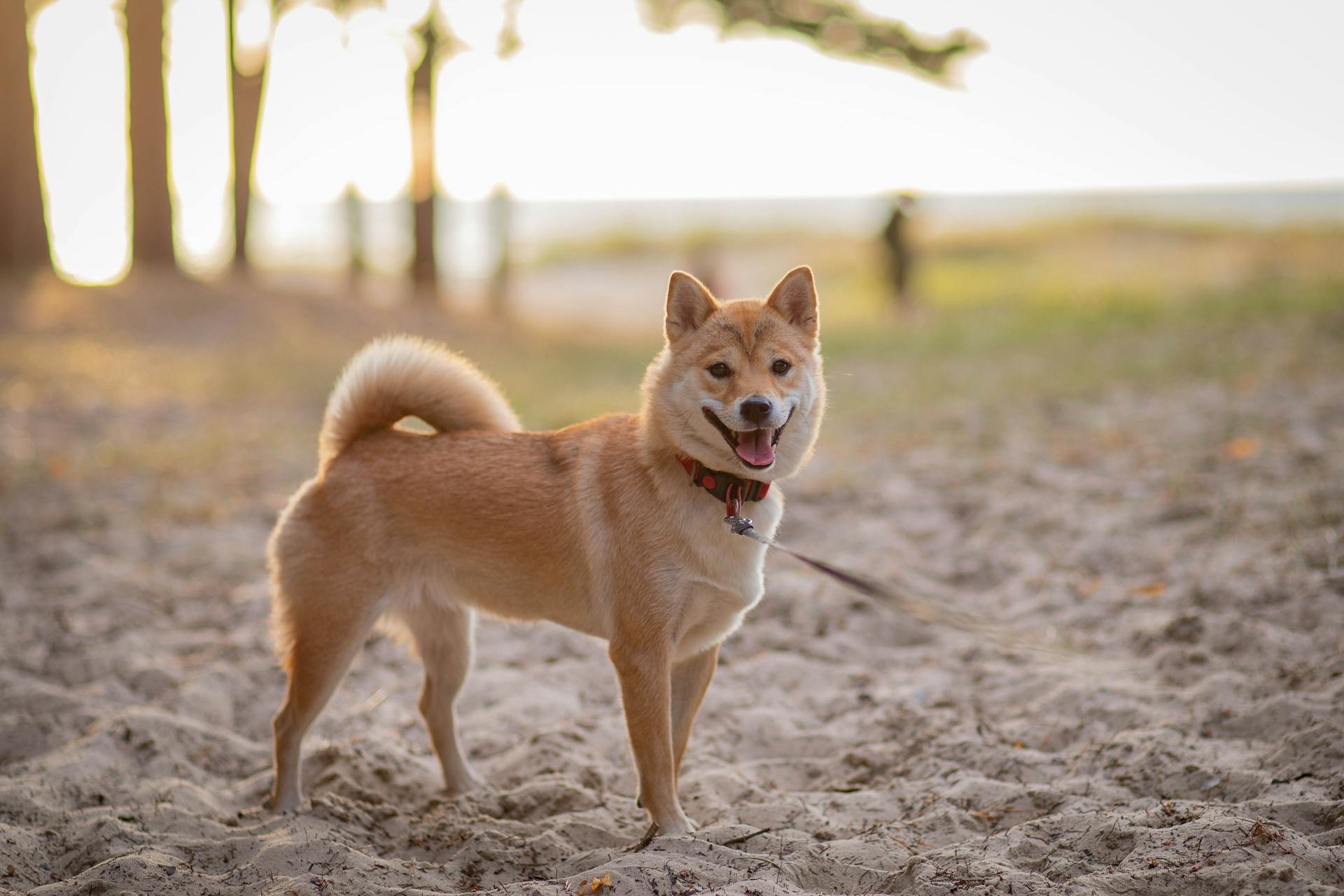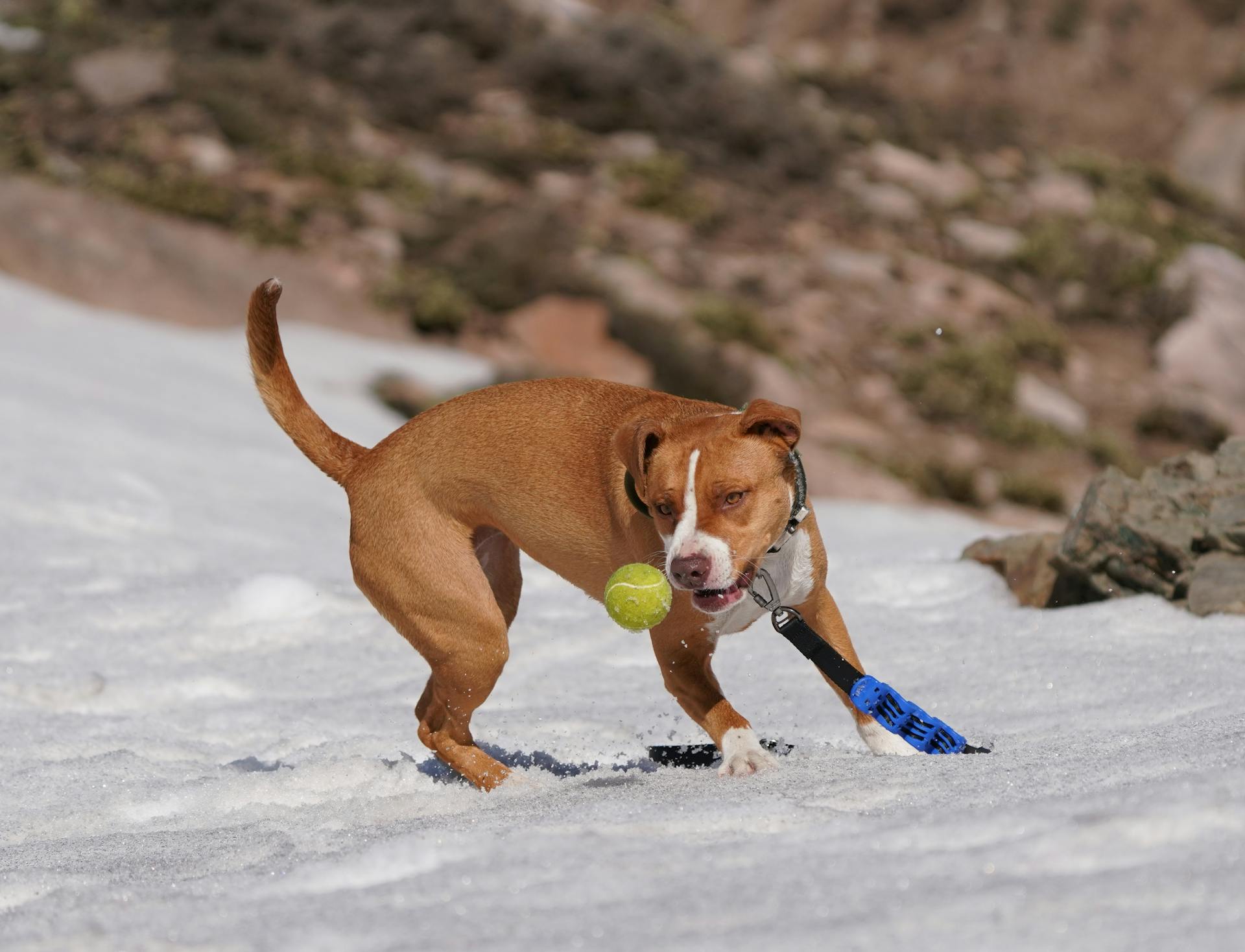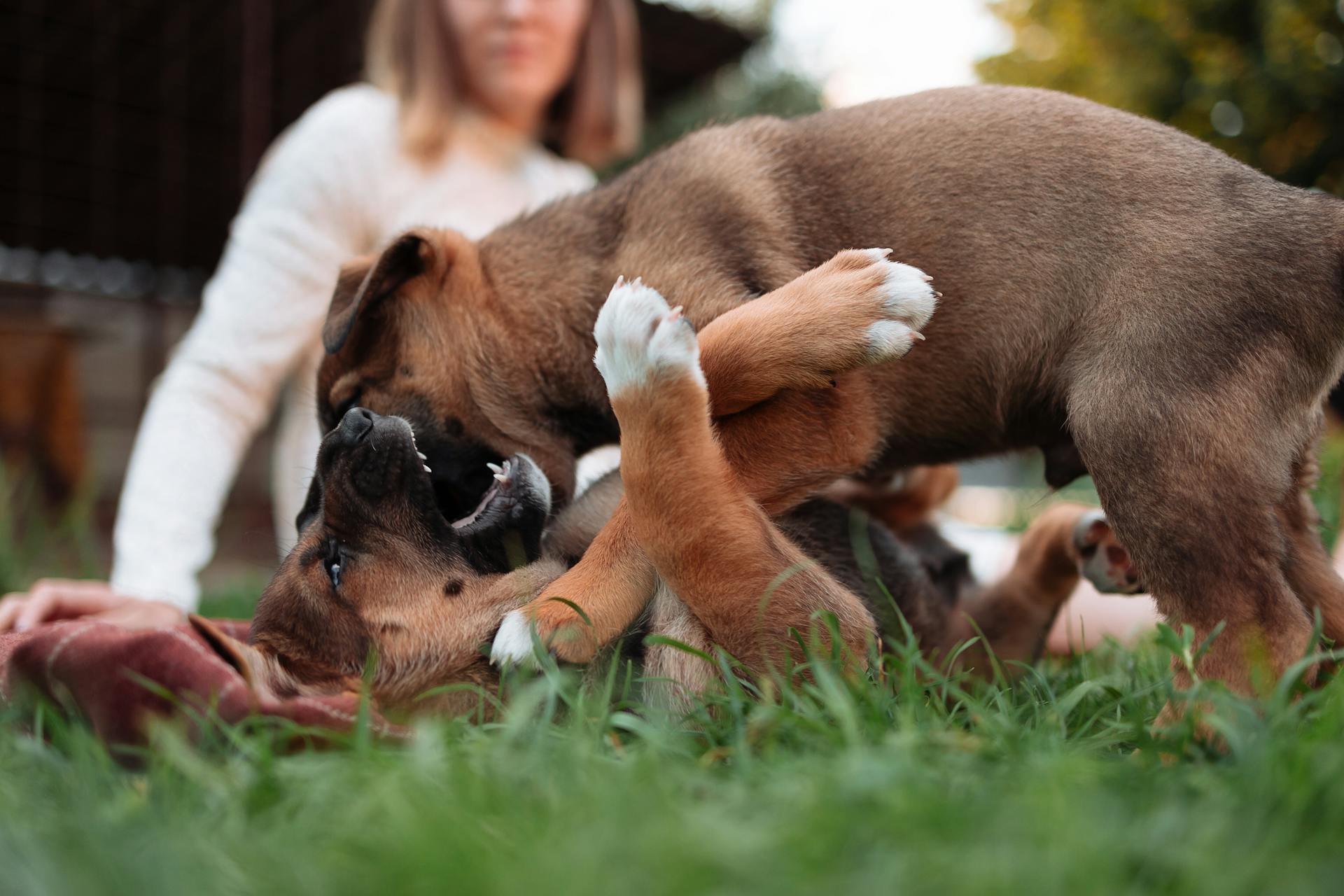
The Maltese is a toy dog breed that weighs between 4 and 8 pounds.
They have a silky, white coat that requires regular grooming to prevent matting and tangling.
Their small size makes them a great companion for apartment dwellers, but they still need regular exercise to stay healthy.
Maltese dogs are known for their gentle and affectionate nature, making them a great fit for families with children.
Care and Maintenance
The Maltese is a playful breed that can thrive in small spaces, but it needs regular exercise and mental stimulation through leashed walks and playtime.
Their long white coat requires daily brushing, ideally with a pin brush, to prevent tangles, and a slicker brush once a week to remove dirt.
Bathing a Maltese too much can dry out their skin and coat, so aim for every four to six weeks, using a shampoo specifically formulated for white dogs to maintain their brilliant white coat.
Their small size makes them prone to patellar luxation, a condition where the kneecap shifts out of alignment, causing hind-leg "skipping", so regular veterinary check-ups are essential.
You'll also need to trim their nails about once a month, and brush their teeth daily to control tartar and prevent dental disease, which can occur in small breed pups.
How to Care
The Maltese is a low-maintenance breed when it comes to exercise needs, but they do require regular grooming to prevent matting and tangling.
Their long, silky coat needs to be brushed every day, ideally with a pin brush, and once a week with a slicker brush to get deeper into the coat and remove any dirt.
Bathing a Maltese too much can dry out their skin and coat, so it's recommended to give them a bath about every four to six weeks.
Tear stains are a common issue with Maltese dogs, and they can be prevented by wiping their eyes and face every day.
You might enjoy: When Is National Boston Terrier Day
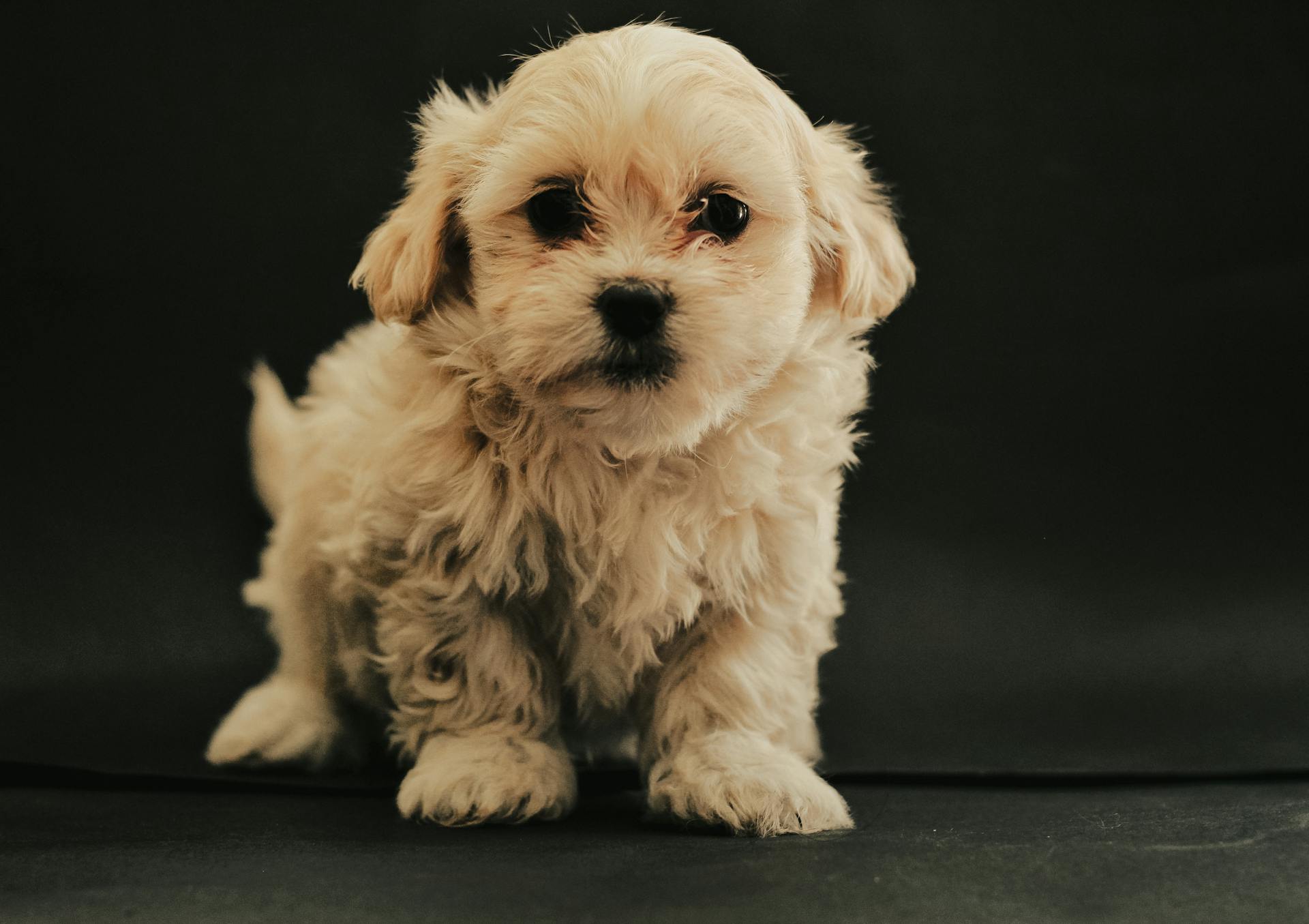
Maltese dogs are prone to dental disease, so it's essential to brush their teeth daily to control tartar and start early when they're a puppy.
Their nails grow fast and require regular trimming, ideally once a month, and you can hear the nails clicking on the ground when it's time for a trim.
Housebreaking can be a challenge with Maltese dogs, especially in smaller spaces, so patience and consistency are key.
Maltese are generally patient and friendly with children, but they can be snappy with raucous kids, so it's essential to supervise interactions between children and Maltese dogs.
Regular grooming can help prevent secondary health issues that can arise from matted hair, such as skin irritation.
The Maltese breed is prone to patellar luxation, a condition where the kneecap shifts out of alignment, causing hind-leg "skipping", so it's crucial to check for this condition if your dog is showing symptoms.
Explore further: What to Feed Dogs without Dog Food
Use
The Maltese is kept for companionship, for ornament, or for competitive exhibition. This breed makes a great companion due to its affectionate nature.
It is ranked 59th of 79 breeds assessed for intelligence by Stanley Coren.
Breed Information
The Maltese breed has a rich history that spans over two thousand years, originating from the island of Malta in the Mediterranean Sea.
They were mentioned by the philosopher Aristotle and were even depicted on ancient Greek pottery. The breed became popular among the French aristocracy in the 15th century and later among the British royal ladies, including Queen Elizabeth I and Mary Queen of Scots.
The Maltese is a small dog with a dense, glossy coat that sheds very little, making them a great choice for people with dog allergies. Adult Maltese typically weigh between 3-4 kg (7-9 lb) and stand between 20-23 cm (8-9 in) tall.
Here are some key characteristics of the Maltese breed:
- Coat: dense, glossy, silky, and shiny
- Color: pure white, with a pale ivory tinge or light brown spotting permitted
- Weight: 3-4 kg (7-9 lb)
- Height: 20-23 cm (8-9 in)
- Temperament: lively, calm, and affectionate
Breed History
The Maltese breed has a rich history that spans over two thousand years, originating from the island of Malta in the Mediterranean Sea.
The ancient Greeks were familiar with the breed, and it's even mentioned on their pottery. Aristotle referred to the Maltese as "perfectly proportioned".
The Maltese became a favorite among the French aristocracy in the 15th century, and a century later, they were the go-to pet of British royal ladies, including Queen Elizabeth I and Mary Queen of Scots.
The breed was almost extinct in the 17th and 18th centuries, but breeders worked to restore it to its former glory. The Maltese were introduced to the US in the late 1800s and were recognized by the American Kennel Club (AKC) in 1888.
The Maltese was a status symbol for the ancient Romans, and there's even a legend that Saint Paul was given a Maltese after he was shipwrecked on Malta.
Intriguing read: Queen Victoria Pomeranian Dog
Characteristics
The Maltese breed is known for its stunning coat, which is dense, glossy, silky, and shiny. It falls heavily along the body without curls or an undercoat.
The Maltese coat is a key characteristic of the breed. It's pure white, but a pale ivory tinge or light brown spotting is permitted.
Adult Maltese typically weigh between 3-4 kg (7-9 lb). Females are generally 20-23 cm (8-9 in) tall, while males are slightly taller.
The Maltese is a small breed, but it's not fragile. With proper training and socialization, they get along well with other pets.
Despite their small size, Maltese dogs are very intelligent and social. They're often friendly with other dogs and pets, making them a great choice for families with multiple pets.
Here are some key characteristics of the Maltese breed:
- Adult weight: 3-4 kg (7-9 lb)
- Height: Females 20-23 cm (8-9 in), males slightly taller
- Coat: Dense, glossy, silky, and shiny
- Color: Pure white, with pale ivory tinge or light brown spotting permitted
Health and Wellness
Maltese dogs are known for their long lifespan, with a 2024 UK study finding a life expectancy of 13.1 years for the breed.
Their longevity is a significant advantage, especially considering that purebreds have an average life expectancy of 12.7 years.
Consider reading: Bull Terrier 100 Years Ago
Training and Exercise
Maltese are highly intelligent and can learn tricks easily, making them a joy to train. Consistency is key with their training, as they can be skilled at finding ways to manipulate their owners into giving them what they want.
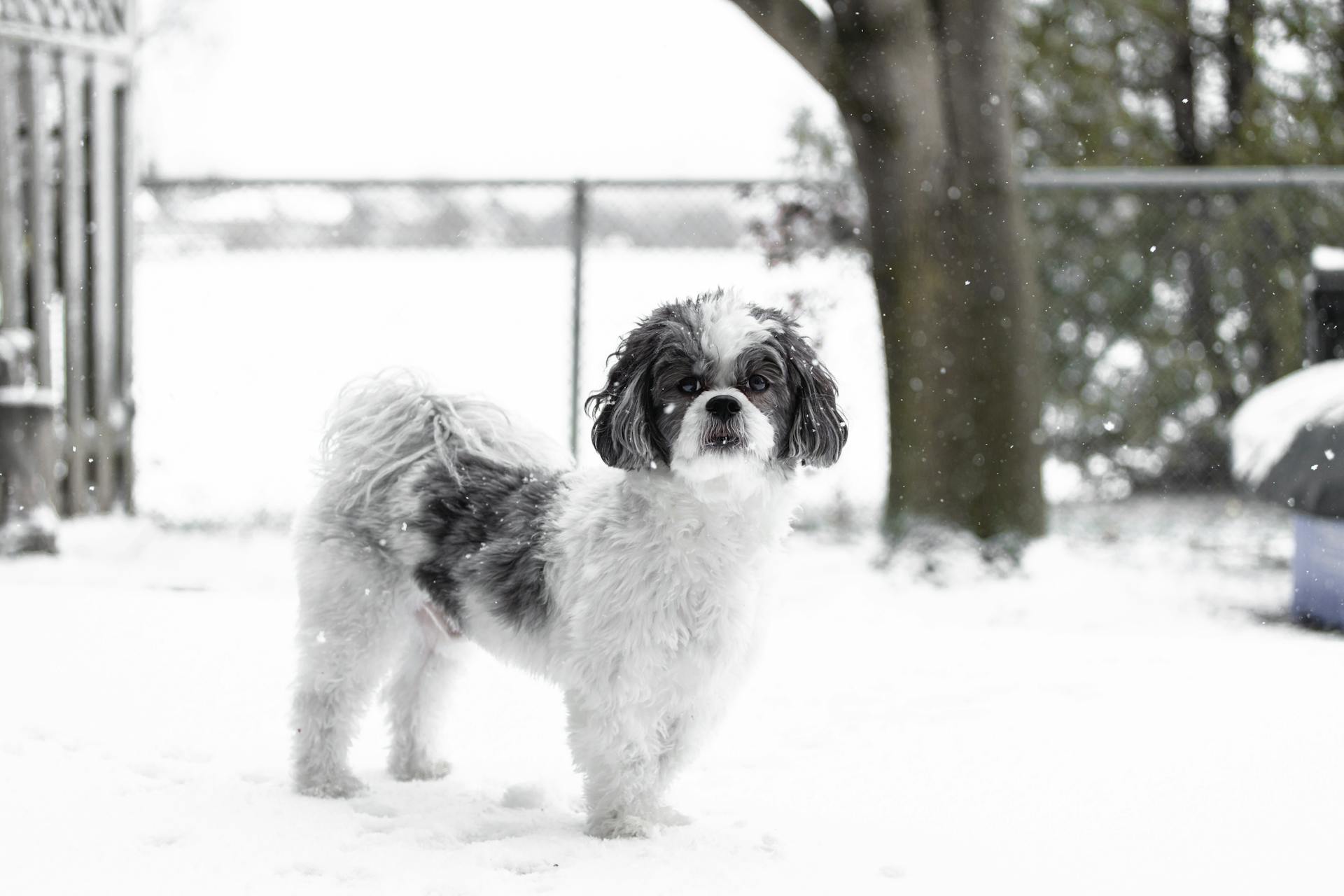
Positive reinforcement training is a great approach, as Maltese respond well to rewards like treats and praise for good behavior. This type of training can help them learn to sit, stay, and other basic commands.
Daily walks or playtime in the backyard are enough to keep Maltese happy and in good shape, despite their energetic nature. In fact, occasional exercise is all they need to stay healthy and active.
Maltese are also talented in dog sports like agility and obedience, which can provide them with mental and physical stimulation.
Diet and Nutrition
The Maltese breed requires a high-quality, commercial dog food that's tailored to their age and life stage. Your veterinarian can help you choose the best food and create a feeding chart.
Maltese dogs typically need 1/4 to 1/2 cup of dry dog food divided into two meals per day. This might seem like a small amount, but it's just right for their small size.
Avoid leaving food out for your Maltese to graze on all day, as this can lead to weight gain and other issues. Instead, establish a routine for mealtimes to help with potty training and developing a set schedule.
Fresh, clean water should always be available for your Maltese.
Check this out: Can Shiba Inu Reach 1 Cent
Health
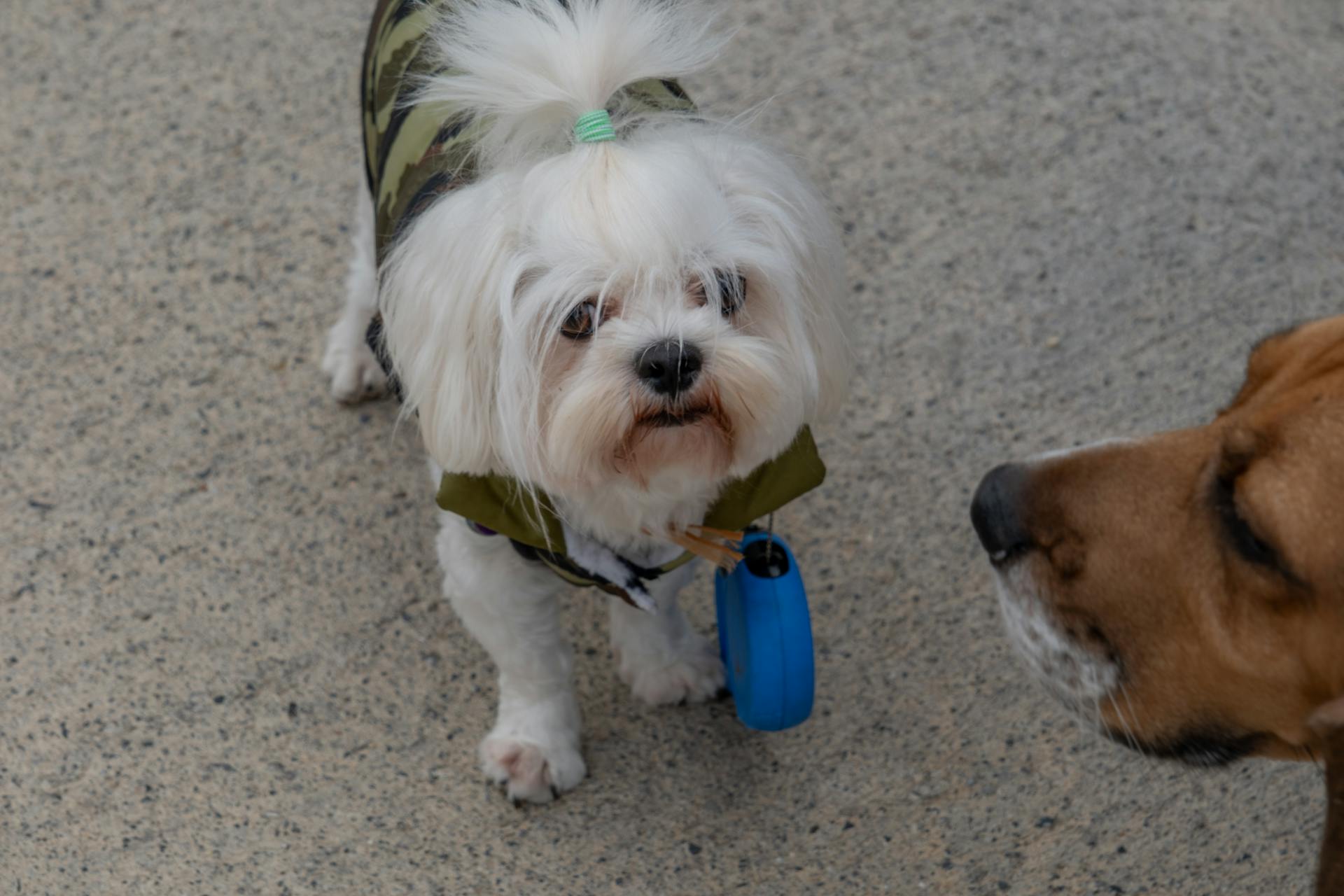
The Maltese breed has a remarkable life expectancy, with a 2024 UK study finding it to be 13.1 years, significantly higher than the average for purebreeds and crossbreeds.
Compared to the average canine life expectancy of 12 years, the Maltese breed has a good life span, making it a wonderful companion for many years.
A 2024 Italian study found the breed's life expectancy to be 11 years, which is still impressive considering the overall average.
With proper care, your Maltese can live longer than the average lifespan, with some individuals reaching 16 or even 17 years old.
Females typically live about a year longer than males, which is worth considering when choosing a furry friend.
Here's an interesting read: Pug Dog Age
Acquiring a Maltese
If you're looking to welcome a Maltese puppy into your family, you can start your search by checking the American Maltese Association, American Maltese Rescue Organization, and Northcentral Maltese Rescue.
You may also want to consider looking into similar breeds, such as Havanese, Bichon Frise, Bolognese, and Lhasa Apso, which are mentioned as alternatives to the Maltese.
Buying or Adopting a Dog
If you're looking to bring a Maltese into your family, you can start by checking reputable sources like the American Maltese Association and Northcentral Maltese Rescue.
You can also consider looking into similar breeds, such as the Havanese and Bichon Frise, which share similar characteristics with the Maltese.
The American Maltese Rescue Organization is a great resource for finding a Maltese in need of a loving home.
These organizations can help you find a Maltese puppy or adult dog that's the perfect fit for your family.
The Bolognese and Lhasa Apso are other breeds you may want to consider, as they have similar temperaments and needs to the Maltese.
A different take: Dogs Similar to Border Collies
Browse Categories
Acquiring a Maltese can be a wonderful experience, but it's essential to consider the breed's needs and characteristics.
Maltese dogs are known for their gentle and affectionate nature, making them great companions for families with children.
Their small size requires regular grooming to prevent matting and tangling of their silky coats.
Maltese dogs are intelligent and trainable, but they can be stubborn at times.
Housebreaking a Maltese requires patience and consistency, as they can be prone to accidents.
Regular exercise, such as short walks and playtime, is necessary to keep them happy and healthy.
Maltese dogs are generally quiet, but they do require attention and socialization to prevent barking and behavioral issues.
General Information
Maltese are loving and friendly dogs who want nothing more than to snuggle up in their owner's lap.
They get along with other dogs and pets, but are quite fragile and can be easily hurt by kids or bigger pets.
Maltese dogs are a great choice for people with allergies due to their luxurious white coat, which is hypoallergenic.
However, they require daily brushing and combing, as well as regular baths and nail trimming.
They are quite energetic but don't need too much exercise.
Physical Appearance
The Maltese breed is known for its adorable physical appearance. They typically weigh between 3-10 pounds and stand between 7-10 inches tall at the shoulder.
Their compact body is well-proportioned, with a slightly rounded head and a black-button nose. Dark eyes and a tufted tail curved over the back are also distinctive features.
One of the most striking things about the Maltese is their silky white coat, which can grow to cover their short limbs, giving them a floating appearance on the floor. This coat is single-layered and doesn't have an undercoat, which means they shed very little.
Their floppy ears and cute facial expression only add to their charm. The Maltese are also known for their hypoallergenic fur, making them a great choice for people with allergies.
Here are some key physical characteristics of the Maltese breed:
In Modern Times
In Modern Times, technology has greatly impacted the way we live and interact with each other.
The internet has made it easier for people to access information and connect with others across the globe.
Social media platforms have become a significant part of our daily lives, with billions of users worldwide.

Online shopping has become increasingly popular, with many people preferring to shop from the comfort of their own homes.
E-commerce websites have made it possible for businesses to reach a wider audience and sell their products globally.
Digital payments have become more common, with many people using their smartphones to make transactions.
Key Takeaways
Maltese dogs are loving and friendly, but they can be fragile and easily hurt by kids or bigger pets. They thrive on attention and affection, so be prepared to give them plenty of love.
Their luxurious white coat is a standout feature, but it requires daily brushing and combing, as well as regular baths and nail trimming.
Maltese dogs are relatively low-maintenance when it comes to exercise, needing only a short walk once a day to stay happy and healthy.
Some common health issues to watch out for in Maltese dogs include luxating patella, white dog shaker syndrome, and portosystemic shunt.
Here are some key health conditions to be aware of:
- Luxating patella
- White dog shaker syndrome
- Portosystemic shunt
Frequently Asked Questions
Is Maltese the cutest dog in the world?
Maltese dogs are often considered one of the cutest breeds due to their adorable appearance. Their sweet and playful nature only adds to their irresistible charm.
Do Maltese dogs like to cuddle?
Yes, Maltese dogs are extremely affectionate and love being cuddled and close to their human family members. They thrive on human interaction and will often seek out snuggles and attention.
Are Maltese dogs expensive?
Yes, Maltese dogs can be expensive, with prices ranging from $600 to $2340 for a puppy from a reputable breeder. The cost may vary depending on the puppy's lineage and physical characteristics.
Are Maltese good house dogs?
Yes, Maltese make great house dogs due to their adaptable nature and ability to thrive in indoor environments. They're a perfect fit for apartment living or small homes.
Do Maltese dogs bark a lot?
Yes, Maltese dogs are prone to barking, which can be a concern for apartment dwellers. They may bark more frequently when exposed to other pets and children.
Featured Images: pexels.com
